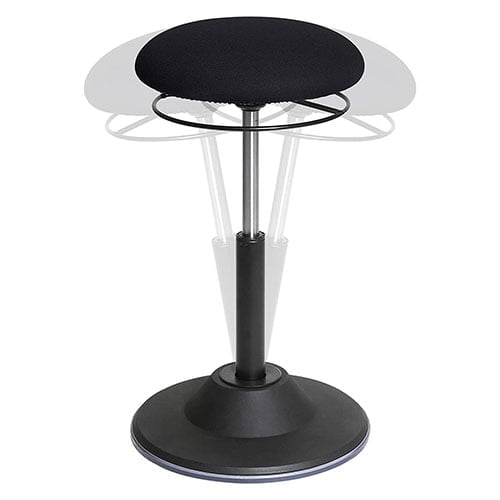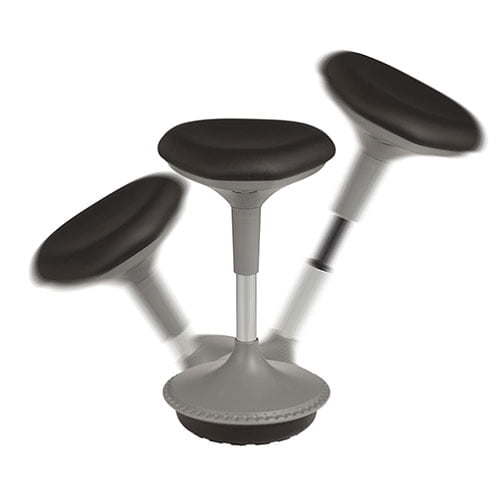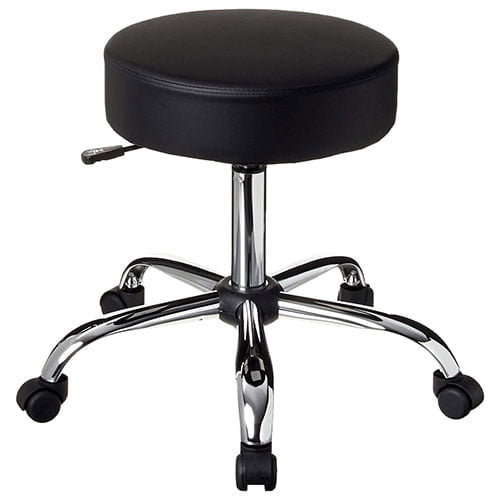Ergonomics of a Stool: Enhancing Comfort and Posture
Introduction
When it comes to seating, the ergonomics of a stool play a crucial role in promoting comfort, supporting proper posture, and preventing discomfort or pain. Whether you’re sitting at a bar, working at a desk, or enjoying a meal, choosing the right stool that aligns with ergonomic principles can make a significant difference in your overall well-being. In this article, we’ll explore the key aspects of stool ergonomics, from design features to adjustable options, and provide you with practical tips for selecting the ideal stool for your needs.
What is an ergonomic stool?
An ergonomic stool is a specially designed seating option that prioritizes comfort, proper posture, and user-friendly features. It incorporates elements such as adjustable height, lumbar support, stable base design, and footrests to promote optimal sitting ergonomics. By aligning the body in a neutral position and reducing strain on the muscles and joints, an ergonomic stool helps enhance comfort and support overall well-being during extended periods of sitting.
Our Picks Top #5 Best Ergonomic Stools

Seville Classics Airlift 360 Sit-Stand Ergonomic Stool

Ergo Adjustable Height Active Learning Stool – Tilting Motion

Boss Office Products Be Well Medical Spa Ergonomic Stool
![Mount-It! Ergonomic Sit Stand Stool [360° Tilt] Height Adjustable](https://ergonomicthings.com/wp-content/uploads/2023/05/Mount-It-Ergonomic-Sit-Stand-Stool-360-Tilt-Height-Adjustable.jpg)
Mount-It! Ergonomic Sit Stand Stool [360° Tilt] Height Adjustable
Product Features

VIVO Ergonomic Kneeling Stool Chair
Product Features
The Importance of Ergonomics in Stool Design
What is Ergonomics?
Ergonomics, derived from the Greek words “ergon” (meaning work) and “nomos” (meaning natural law), is the science of designing products and environments that maximize efficiency, comfort, and safety for individuals. It aims to create harmonious interactions between people and their surroundings, taking into account human abilities and limitations. In the context of stool design, ergonomics focuses on providing optimal support, stability, and adjustability to enhance sitting posture and reduce strain on the body.
Ergonomic Stool: A Game-Changer for Comfort
Sitting on an ergonomic stool offers numerous benefits, such as improved comfort, reduced fatigue, enhanced productivity, and decreased risk of musculoskeletal disorders. By aligning the body in a neutral position, an ergonomic stool helps maintain the natural curvature of the spine, prevents slouching, and minimizes stress on the muscles and joints. It encourages proper circulation, supports good posture, and promotes a healthier sitting experience overall.
Key Elements of Ergonomic Stool Design
Seat Height and Depth
Achieving the correct seat height and depth is vital for optimal ergonomics. A stool with adjustable height allows you to position your feet flat on the floor or on a footrest, ensuring proper blood circulation and reducing strain on the lower back. Additionally, the seat depth should accommodate the user’s thigh length, providing ample support without causing pressure behind the knees.
Lumbar Support
Proper lumbar support is essential for maintaining the natural curve of the lower spine. Ergonomic stools often incorporate a curved backrest or lumbar pad to encourage healthy posture and alleviate pressure on the lumbar region. The lumbar support should be adjustable to accommodate different individuals and preferences.
Stability and Base Design
Stability is a fundamental aspect of stool ergonomics. A stable stool ensures that you can sit comfortably without the risk of tipping or wobbling. The base design plays a crucial role in stability, with a wide and sturdy base being highly desirable. Additionally, stools with non-slip rubberized feet provide enhanced traction, preventing accidental slips or movements.
Footrests and Foot Support
Including a footrest or foot support on a stool allows for proper weight distribution and relaxation of the legs. It helps reduce pressure on the feet, promotes good circulation, and prevents leg fatigue. An adjustable footrest enables customization according to individual leg lengths, ensuring optimal ergonomic support.
Materials and Padding
The choice of materials and padding in an ergonomic stool contributes to comfort and durability. High-quality cushioning, such as memory foam or breathable fabrics, enhances the sitting experience and reduces discomfort. Stools with breathable materials also prevent excessive heat buildup, keeping you cool and comfortable for extended periods.
FAQ
1. What are the potential health risks associated with sitting on a non-ergonomic stool?
Sitting on a non-ergonomic stool for prolonged periods can lead to various health issues, including back pain, poor circulation, muscle stiffness, and reduced productivity. The lack of proper support and adjustability can result in an imbalance in posture, causing strain on the neck, shoulders, and lower back. It can also lead to decreased concentration and discomfort, affecting overall well-being.
2. How can an ergonomic stool improve productivity?
An ergonomic stool promotes better posture and comfort, which directly contributes to increased productivity. By providing proper support to the spine and reducing muscle fatigue, it allows individuals to focus on their tasks for longer periods without experiencing discomfort or distraction. The enhanced blood circulation and reduced strain on the body also help maintain energy levels and concentration throughout the day.
3. Are there specific ergonomic stool designs for different activities?
Yes, there are various ergonomic stool designs tailored to specific activities. For example, drafting stools are designed for elevated work surfaces, such as standing desks or drawing tables, and typically feature a taller height and foot ring for added support. Saddle stools have a saddle-shaped seat that promotes a more open hip angle, making them suitable for tasks that require forward-leaning positions, such as dental work or guitar playing. Adjustable ergonomic stools with swivel capabilities are versatile options that can adapt to different activities and user preferences.
4. Can an ergonomic stool be used by people of different heights and body types?
Absolutely! One of the key advantages of ergonomic stools is their ability to accommodate people of various heights and body types. Many ergonomic stools come with adjustable features, including seat height, backrest height, and footrest height, allowing individuals to customize the stool according to their specific needs. It’s essential to choose a stool with a wide range of adjustability to ensure a comfortable fit for all users.
5. Are there any additional features to consider when selecting an ergonomic stool?
In addition to the primary ergonomic features mentioned earlier, there are a few other factors to consider when choosing an ergonomic stool. These include:
- Swivel mechanism: A swiveling feature allows users to rotate their stool without straining or twisting their bodies, providing easy access to different work areas or conversation partners.
- Armrests: Some ergonomic stools come with adjustable or removable armrests, providing extra support and comfort for the arms and shoulders.
- Portability: If you require flexibility and frequently move between workstations, consider a lightweight and portable ergonomic stool that is easy to transport.
- Easy maintenance: Opt for stools with materials that are easy to clean and maintain, ensuring long-term durability and hygiene.
6. Can an ergonomic stool help alleviate lower back pain?
Yes, an ergonomic stool can be beneficial in alleviating lower back pain. By providing proper lumbar support and promoting a neutral spine position, it helps reduce strain on the lower back. The adjustable features of an ergonomic stool allow you to customize the support according to your individual needs, providing relief and preventing further discomfort.
7. How do I determine the ideal seat height for an ergonomic stool?
To determine the ideal seat height for an ergonomic stool, follow these steps:
- Start by sitting with your feet flat on the floor and your knees at a 90-degree angle.
- Measure the distance from the floor to the back of your knee.
- Adjust the seat height of the stool to match this measurement, allowing your feet to rest comfortably on the floor or a footrest.
8. Can an ergonomic stool be used in a standing desk setup?
Yes, an ergonomic stool can be used in a standing desk setup. It provides a supportive option for moments when you want to take a break from standing but still maintain an active posture. The stool allows you to lean or perch while working, reducing the strain on your legs and feet. It’s important to choose a stool with adjustable height to align it with the height of your standing desk.
9. Are there ergonomic stools specifically designed for children?
Yes, there are ergonomic stools designed specifically for children. These stools take into consideration the unique needs and proportions of children, providing them with proper support and comfort. They often feature adjustable heights, smaller seat sizes, and vibrant designs to cater to the preferences and growth of children.
10. How can I maintain good posture while sitting on an ergonomic stool?
Maintaining good posture while sitting on an ergonomic stool involves a few key practices:
- Sit with your back against the backrest, ensuring your spine maintains its natural curves.
- Keep your feet flat on the floor or on a footrest, avoiding dangling or crossing your legs.
- Relax your shoulders and keep them aligned with your hips.
- Avoid slouching or leaning forward for prolonged periods.
- Take regular breaks and incorporate movement or stretching exercises to prevent stiffness.
Remember that while an ergonomic stool can support good posture, it’s essential to be mindful of your sitting habits and make conscious efforts to maintain proper alignment throughout the day.
11. Are there specific weight limits for ergonomic stools?
Yes, ergonomic stools typically have weight limits specified by the manufacturer. It’s crucial to check the weight capacity of the stool before purchasing to ensure it can safely support your body weight. Exceeding the weight limit can compromise the stability and durability of the stool, affecting its ergonomic functionality.
12. Can an ergonomic stool be used in a home office setup?
Absolutely! An ergonomic stool can be a great addition to a home office setup. It provides a comfortable seating option that promotes good posture and reduces strain during long hours of work. Whether you have a traditional desk or a standing desk, incorporating an ergonomic stool can enhance your sitting experience and overall productivity.
13. How do I adjust the lumbar support on an ergonomic stool?
The method for adjusting lumbar support on an ergonomic stool may vary depending on the specific design. Generally, there are two common adjustment mechanisms:
- Some stools have a built-in lumbar pad that can be moved up or down to align with your lower back. Look for a lever or knob that allows you to make this adjustment.
- Other stools have an inflatable lumbar support feature. These stools come with a hand pump or valve that allows you to adjust the amount of air in the lumbar support area, customizing the level of support to your preference.
14. Can an ergonomic stool help with proper breathing and digestion?
Yes, an ergonomic stool can contribute to proper breathing and digestion. Sitting in a slouched or hunched position can compress the diaphragm and hinder deep breathing. By promoting good posture, an ergonomic stool allows for optimal lung expansion and breathing. Additionally, maintaining a proper seated position can aid digestion by preventing compression of the abdomen and promoting healthy digestive function.
15. Are there specific ergonomic stools for individuals with mobility issues?
Yes, there are ergonomic stools designed specifically for individuals with mobility issues. These stools may include features such as swivel mechanisms for easier movement, height adjustment controls that can be operated with minimal effort, and additional stability features to accommodate individuals with reduced mobility. When selecting an ergonomic stool for mobility issues, it’s essential to consider the specific needs and limitations of the user.
These additional questions and answers further explore various aspects of the ergonomics of a stool, helping you gain a deeper understanding of its benefits and applications.
Conclusion
Prioritizing the ergonomics of a stool is essential for promoting comfort, maintaining proper posture, and preventing discomfort or pain while sitting. By selecting a stool with adjustable features, lumbar support, stable base design, and suitable seat height, you can significantly enhance your sitting experience and overall well-being. Remember to consider your specific needs, body type, and the activities you’ll be performing when choosing an ergonomic stool. Investing in a stool that prioritizes ergonomics is a valuable step towards creating a healthier and more comfortable seating environment.

